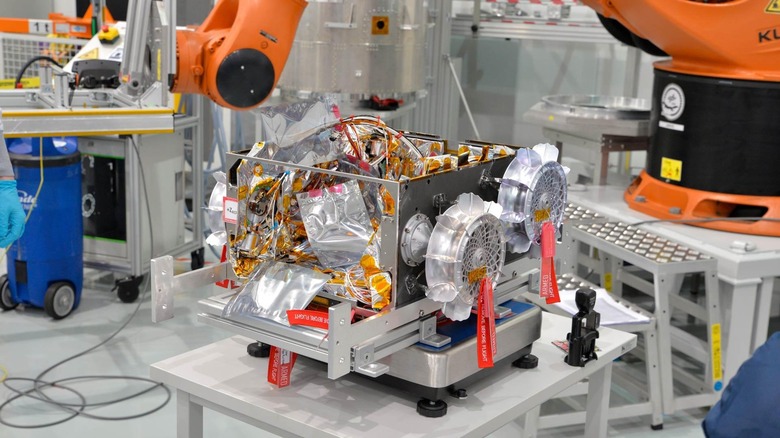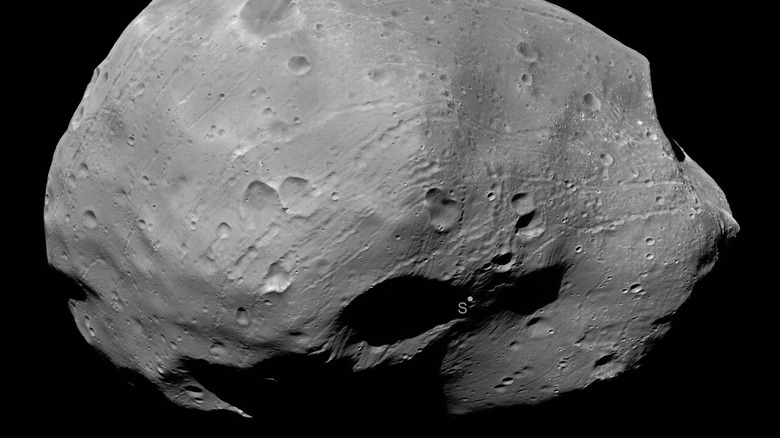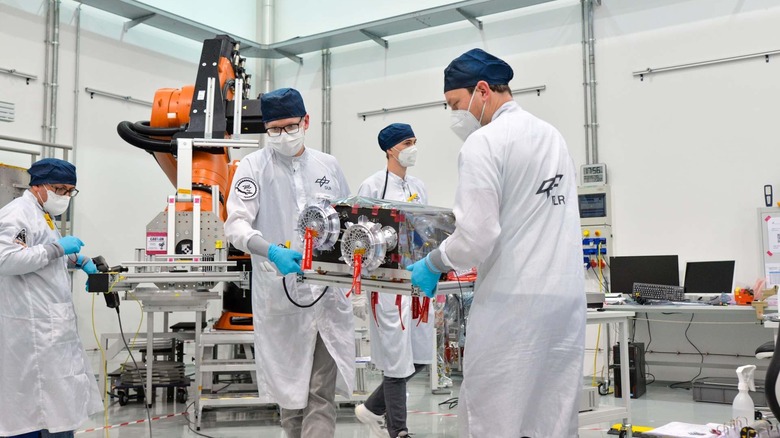Why Researchers Want To Send A Rover To Mars' Moon Phobos
We're learning more than ever before about our planetary neighbor Mars thanks to rovers like Perseverance, Curiosity, and Zhurong, which are exploring there and learning about the planet's geology and history. But parts of Mars that still remain mysterious are its moons — Phobos and Deimos. These moons are small, at just 27 kilometers and 15 kilometers in diameter, respectively. Both moons are also strangely shaped and aren't spherical.
Scientists are interested in these moons because they want to learn about their origin, but they could also hold clues to Mars' history — for example, Phobos could hold information about Mars' ancient atmosphere.
To learn more about Phobos, the Japanese space agency JAXA is planning a mission called the Martian Moon eXploration, which will send a rover to this Martian moon, and the German Aerospace Center — or DLR — will be providing instruments and structure for the rover. DLR is currently building various parts of the rover, including its propulsion and two instruments, to allow the rover to explore the moon's surface for a mission lasting around 100 days.
Designing a rover for Phobos
One challenge of building a rover to explore a small moon like Phobos is that the gravity there is very low. In some ways low gravity can be helpful — when landing on Mars, for example, rovers need to slow down tremendously from the very high speeds at which they travel to a safe speed for landing on the surface. This is made more difficult by the fact Mars' atmosphere is thin, but easier by the fact that the planet's gravity is lower than that of Earth. Similarly, flying a helicopter on Mars is only possible in the thin atmosphere because the gravity is low.
But Phobos has such low gravity that traveling too fast could send you spinning off the moon and into space. A rover for such an environment needs to be able to grip onto the ground in order to move around the surface.
"With the MMX rover, we are breaking new ground in terms of technology, because never before has an exploration vehicle with wheels traveled on a small celestial body with only one-thousandth of the Earth's gravitational pull," explained Markus Grebenstein of the DLR Institute of Robotics and Mechatronics — a member of the team working on the rover's structure.
The landing will be difficult as well, as the team cannot predict which way up the rover will land. "As the rover free-falls onto Phobos following separation from the spacecraft, it will perform several "somersaults" upon touchdown without damage and come to rest in an unpredictable position," Grebenstein said. "From this situation, it must autonomously upright itself with the help of the propulsion system and unfold its solar panels."
Exploring the Red Planet's moons
To investigate the Martian moon, the MMX rover will have instruments including a radiometer and a spectrometer, which will be used to learn about the moon's surface. The rover will be able to gather data about factors like the surface temperature and porosity, which will allow researchers to compare this data to similar data about asteroids.
The overall aim is to learn about how Phobos formed, such as the question of whether it was an asteroid that wandered close to Mars and got pulled in by its gravity, or whether it was a piece of Mars that was blown off by a large impact millions of years ago.
Cameras on the rover will be used for navigation, but should also be able to snap images of the moon's surface seen up close for the first time.
Hardware on the MMX needs to be very robust, as not only does Phobos have very low temperatures and no atmosphere, but the low gravity makes it hard to travel around. The rover "will travel very carefully at only a few millimeters per second in order to retain contact with the ground with its special wheels despite the low gravity," said Stefan Barthelmes from the DLR Institute of System Dynamics and Control.
The aim is for the MMX rover to launch in 2024, with the spacecraft entering orbit around Mars in 2025, and the rover landing on Phobos in 2027.


